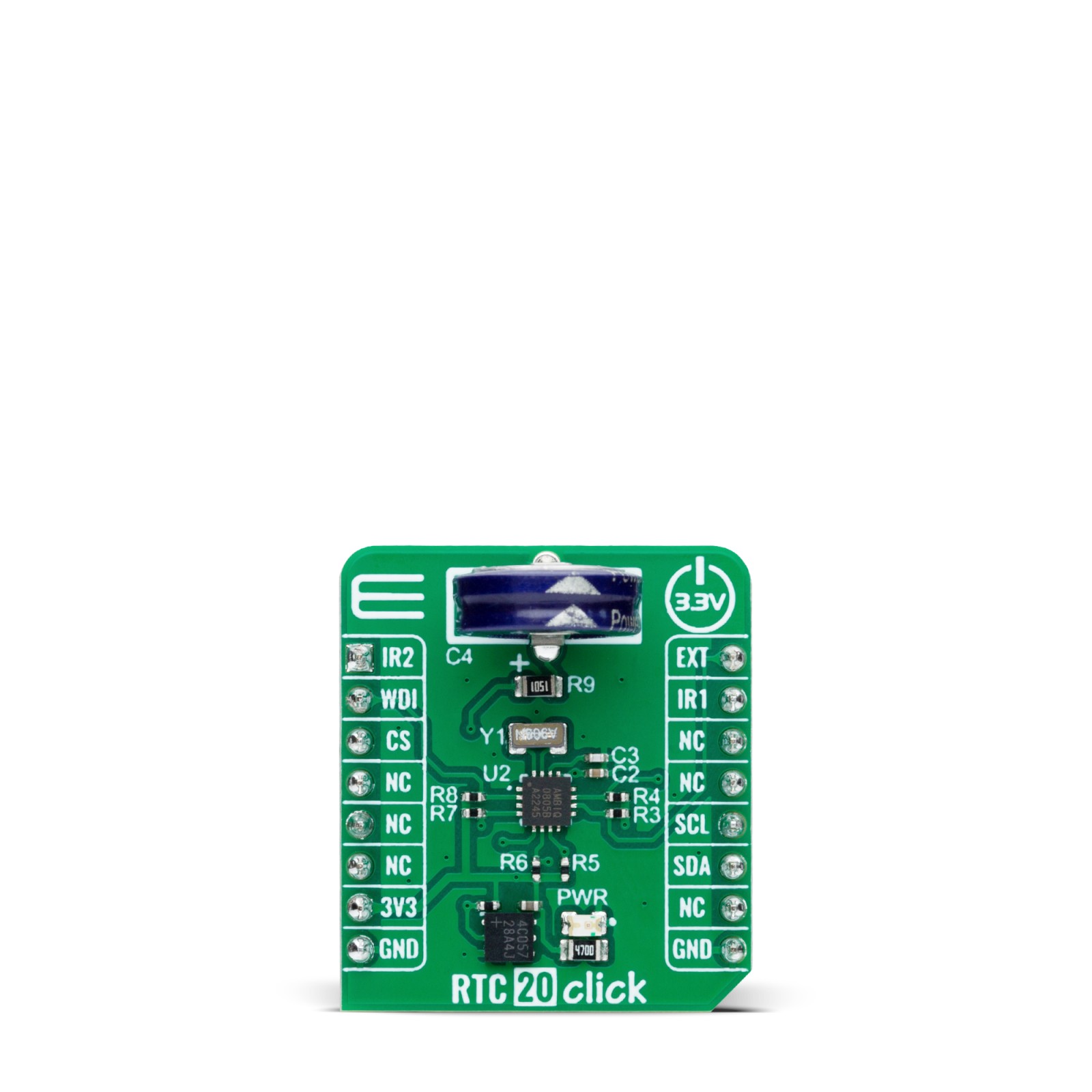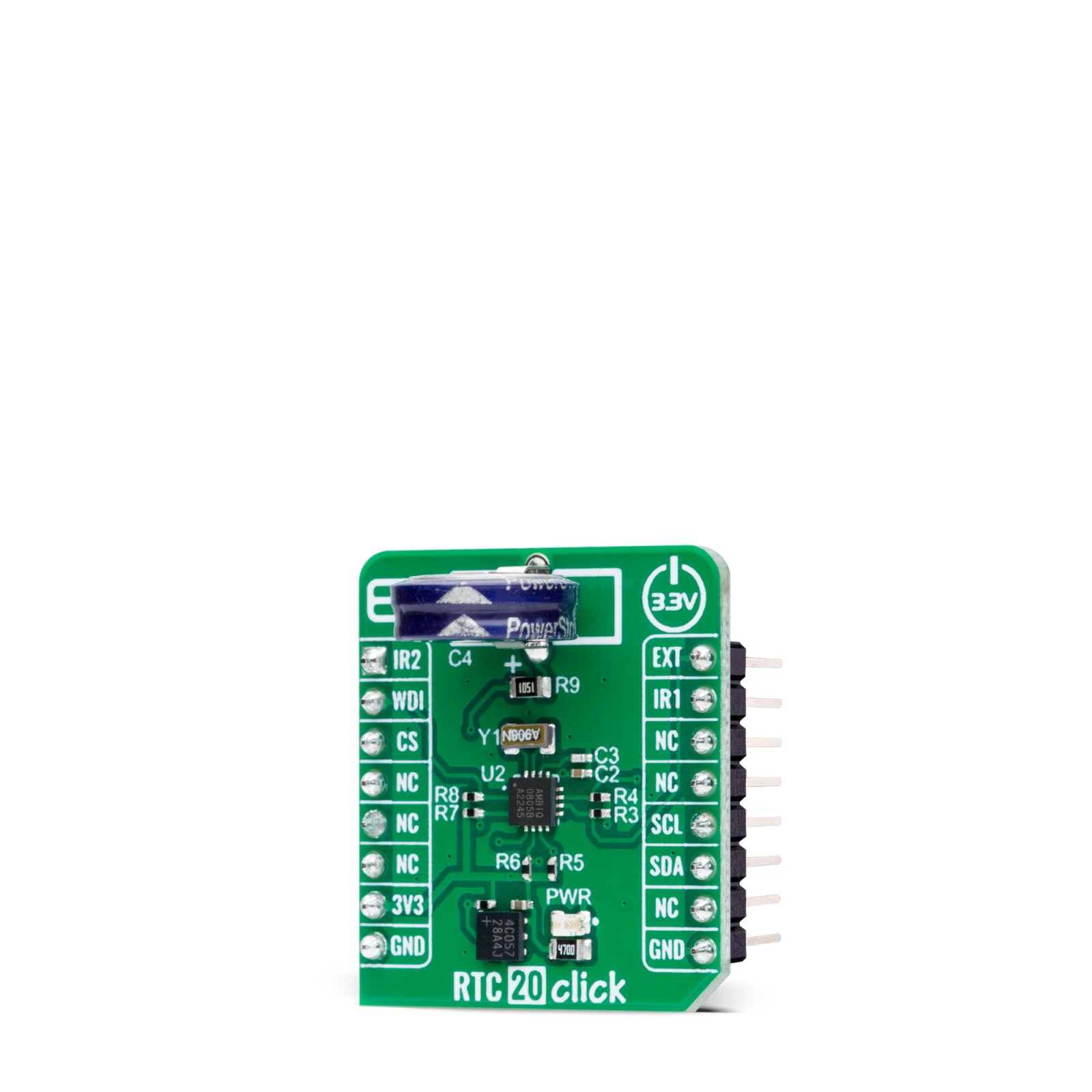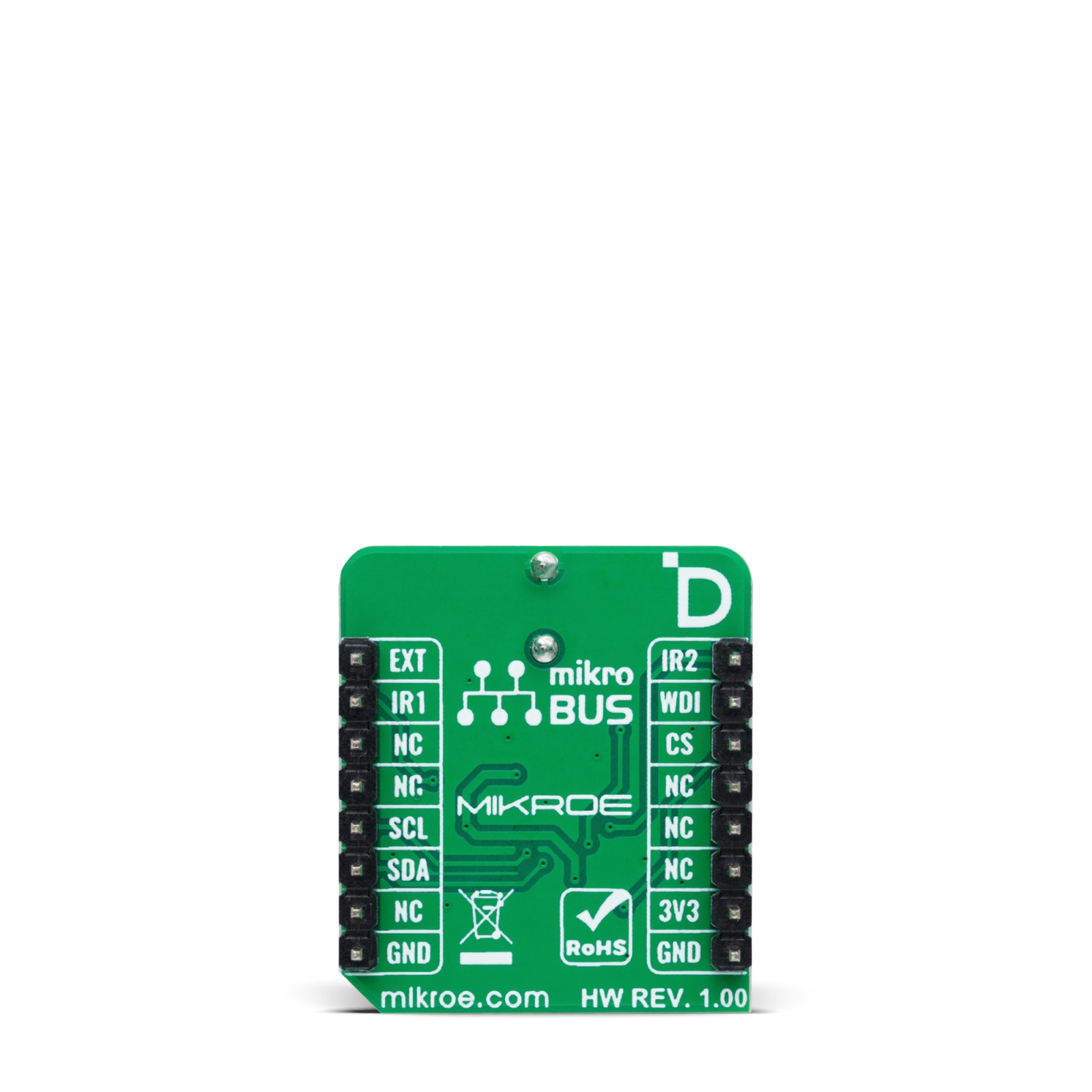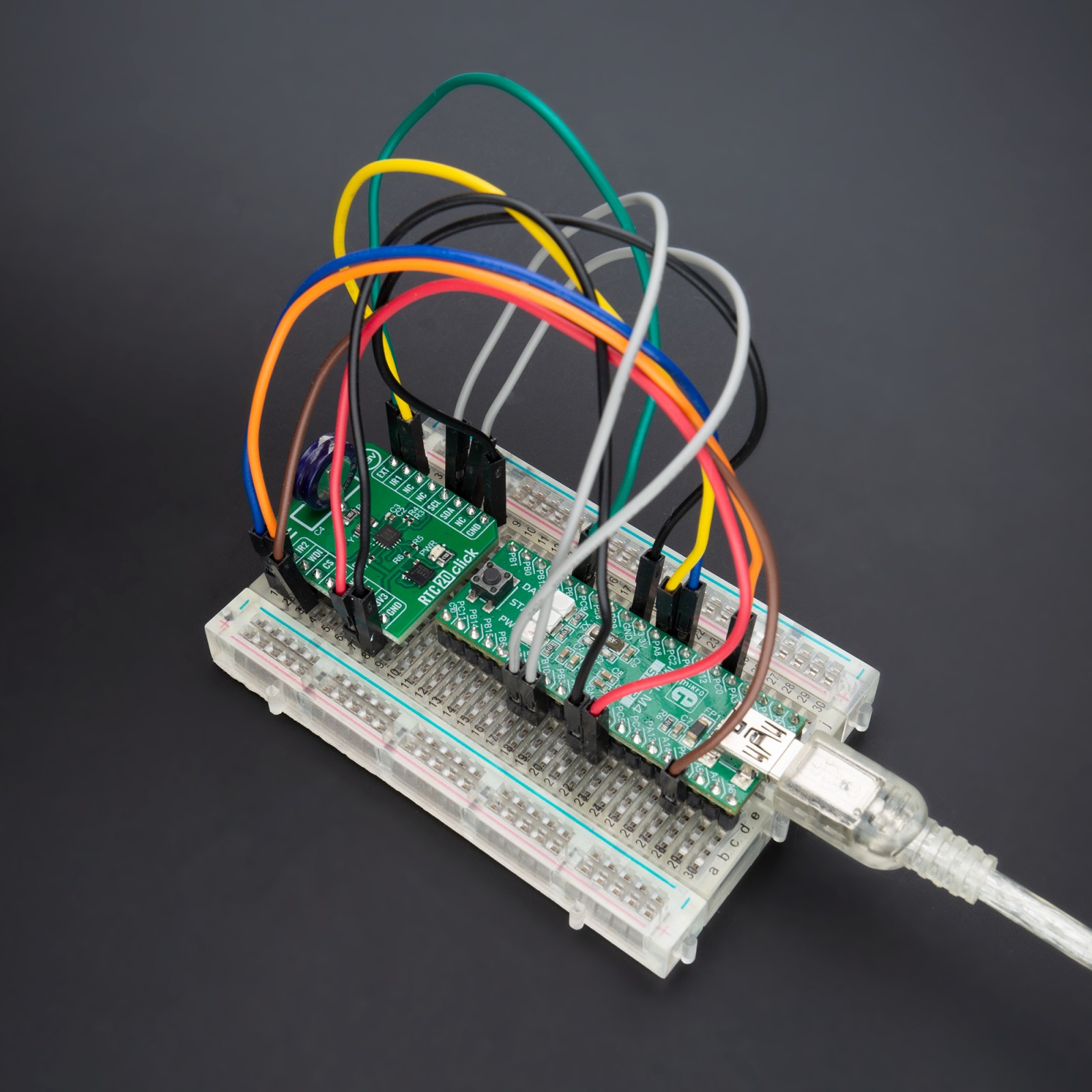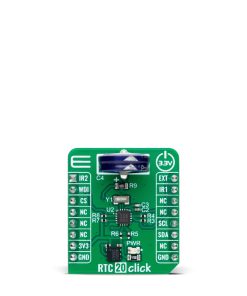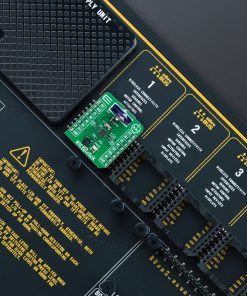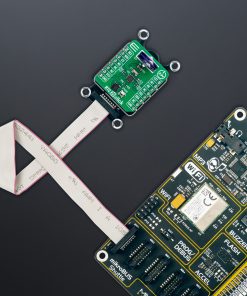RTC 20 Click
R335.00 ex. VAT
RTC 20 Click is a compact add-on board that measures the passage of real-time. This board features the AB0805, an I2C-configurable real-time clock with a highly sophisticated feature set from Abracon LLC. The AB0805 provides information like seconds, minutes, hours, days, months, years, and dates based on a 32.768kHz quartz crystal through an I2C serial interface to transmit time and calendar data to the MCU. It also has automatic leap year compensation, low power consumption, and full RTC functions such as battery backup, programmable counters, and alarms for timer and watchdog functions. This Click board™ is suitable for various time-keeping applications, including daily alarms, metering applications, and others requiring an accurate RTC for their operation.
RTC 20 Click is fully compatible with the mikroBUS™ socket and can be used on any host system supporting the mikroBUS™ standard. It comes with the mikroSDK open-source libraries, offering unparalleled flexibility for evaluation and customization. What sets this Click board™ apart is the groundbreaking ClickID feature, enabling your host system to seamlessly and automatically detect and identify this add-on board.
Stock: Lead-time applicable.
| 5+ | R318.25 |
| 10+ | R301.50 |
| 15+ | R284.75 |
| 20+ | R274.03 |

